1/32 Trumpeter MiG-15 bis
By Mark A Hernandez

This is an injection-molded kit from a Chinese company whom people think is a new company. Actually this company has been producing models for a long time for other name brand manufactures. This is the first time they are producing kits under their own brand name of Trumpeter. They have just released 4 new 1/32 kits. The first of these is the MiG-15 bis and the other 3 being a PLAAF F-5, F-5A and FT-5. These are Chinese versions of the MiG-17. The F-5A is a radar nose version and the FT-5 is the trainer version. I happened to buy all four at once.
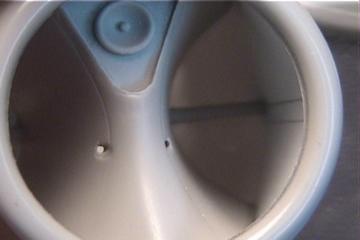
Upon initial inspection the MiG-15 it appears to be a scaled up version on the Tamiya 1/48 MiG-15. It even includes the trolley to put the rear fuselage on if you want to show the engine. Even the instructions are similar in layout. The major difference is that all the control surfaces are separate. There are four main spures, three in light gray and one in dark gray. The dark gray one contains the engine parts and trolley. There are two spures common to all four kits that contain some of the parts for the MiG-17 versions. One spure is the dark gray one and the other has, among other things, 3 different nose rings, a different splitter plate (for the radar), two ejection seats and two pilots and two different instrument panels (these last three items are for the FT-5). You only get the two-seater tub with the FT-5 kit. The clear parts also have a different windscreen for the F-5A version.
There are also rubber tires included as well as a tube of glue. The decal sheet is not as extensive as the Tamiya one. You get the Chinese National insignia that goes on the wings and fuselage and a set of a series of numbers from 0-9 and a couple of additional numbers (2249). There are also 4 thunderbolts, some red star kill markings and a set of black wing walks. (I hear that FROG is reboxing these kits with new decals and possibly new boxart). The kit even comes with a nose weight but it is the same size as the one in the Tamiya kit. Don’t count on it providing adequate nose weight. The surface finish has engraved panel lines but maybe not as crisp as one would expect. The surface finish also has a slight texture to it that will need to be sanded, especially if you want a natural metal finish.
I wanted to try and build this kit right out of the box and for the most part I have, with a few exceptions.
I actually started on the rear fuselage first. On the initial dry fitting of the kit there seems to be a lot of little flash along the interior seams. I cleaned this up with an X-acto knife and sanding stick to get a good fit of the mating parts. On the horizontal stabilizers I needed to remove the locator pins to get a proper fit. On the elevators the P/N’s are not called out in the correct assembly sequence so be careful matching them up. The trailing edges are to thick and need a lot of sanding. I wish they could have made them as a single piece. The elevators also have a flat leading edge and would have looked better if they had a rounded leading edge. There is supposed to be a trim tab on the right elevator. Trumpeter has molded it on both and did not do a good job of it. I sanded off one and partially rescribed the other one.
The rear fuselage fits together well. I did notice a number of overextended panel lines and access cover lines that I had to fill in with CA and sand out. I found this throughout the kit along with a few stray nicks on the fuselage and wings. The airbrakes are not deep enough or detailed enough. I decided to glue them shut and there is a good gap on the bottom that needed some filling. There is also an extra scribed panel line on the lower rear fuselage. It’s within the large rectangular panel just in front of the airbrakes. There is an extra panel within it that, from my references, I can’t see if it was ever there. That will need to be filled in. (It looks like it might have been meant to be used on the MiG-17 model?) At the exhaust outlet I added a small piece of plastic to the base of the tail or else, even with the tailpipe exhaust sticking out, you can look up into the tail. You’ll need to do a lot of sanding to get rid of the seams on the exhaust tube unless you replace it with plastic or brass tubing. The blade antenna on the upper rear fuselage is to thick so I thinned it down. There is a depression/small cut out in the fuselage from the seam to the antenna. After I sanded down the width of the antenna I filled this gap in with a small piece of plastic and sanded it down. On any missing rivet detail I found a #78 drill bit does a good job of replacing that missing rivet detail.
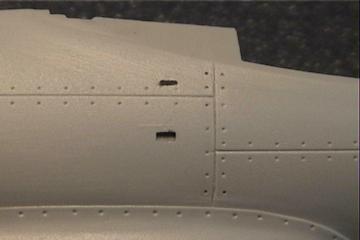
I started on the wing assembly next. Before gluing the wings together decide if the plane you’re building will have the wing tanks and which ones. They come with all four holes open as opposed to flashed over holes, like in the Tamiya kit. If it’s built with the small slipper tanks they will cover all the holes. If you use the bigger wing tanks then you’ll need to fill in two of the holes. I did the same trimming and sanding of the inner seams of the wing. Before putting the wings together I sanded the wing fences down in thickness. In hindsight I would have preferred to cut them off completely and replace them with thin strips of plastic or shim brass. The inner fence is to short in height and both are to short in length. (Same problem as the Tamiya kit.) They should both go to the very leading and trailing edges of the wing. The left inner fence needs a round section cut out. This cut out was used for the pilot to look back to see the flap extension post. The trailing edges on the wings are to thick so more thinning is needed. For the ailerons Trumpeter put a trim tab on both and there should only be one on the left aileron. I had to scribe the lines for it. Also, I have no idea where they came up with the U-shaped attachments that show on the bottom of the wing/aileron joint. I don’t show it in any references. Again, these control surfaces are flat butt joints and would have been preferably to make them more realistically aerodynamic with rounded leading edges. There are sink marks on the topside right leading and trailing edge wing roots and also on the bottom left side trailing edge wing root. The fit of the right wing to the fuselage is not very good. The fuselage fillet is to high and so is the leading edge. It fits flush at the bottom though.
If you build the kit with the wing flaps down per the kit instructions they will be in the wrong place. Like the Tamiya kit it tells you to glue them to the back in the down position. These were Fowler-type flaps which means they extend back as they are being extended down. You’ll need to build the extension rails and also fill in the gaps at the back of the section with plastic if you plan on showing them extended. You’ll also need to fill in the injection pin makes on the surfaces of the flaps. The main gear wells have nice detail but they appear to be too shallow.
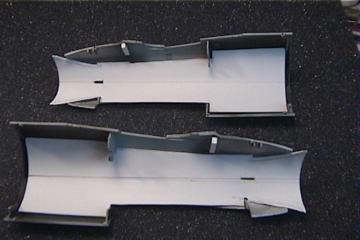
The cockpit and ejection seat are very sparse and could use a new resin and P/E detail set much in the same way that a few different aftermarket manufacturers have done. The instrument panel is to short and should come up to the bottom of the combing. The main set of instruments is centered in the panel and should be offset to the left slightly. There are also no rudder pedals.
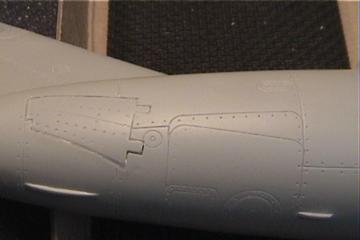
For the forward fuselage I was just going to build it out of the box. After dry fitting all the pieces together and looking down the nose I just couldn’t do it. I’m now in the process of »skinning« the interior of the forward fuselage section in order to give it a better appearance for the intake tube. Without it you can look down that large opening and seen the cockpit tub and wing attachment joints. The kit comes with the holes for the access ladder attachment open so I sealed these up. I added the top portion of the bulkhead to the front of the cockpit tub. Without it you can look into the interior of the kit. I removed the cockpit tub locating tabs on the inside of the fuselage and sanded them flush. I cut out a small piece of the rear cockpit tub bulkhead to correspond with the curvature of the cockpit tub. I sanded the struts on the splitter plate to get rid of the top and bottom seams. I then extended the back of the plate using .040 card stock that I rolled around a tube to get a good curve to match the curve of the intake. This would extend from the back of the plate to the front of the cockpit tub. After a number of corrections and test fits it looks very nice now. Almost like the real thing! There are sink marks along the top portion of the fuselage where the front and rear sections join together. I don’t plan on displaying the engine so I’ll probably glue the two sections together. The hole for the antenna on the right side of the fuselage is in the wrong location. It should be moved up about ¼«. It should be above the panel line and not below it.
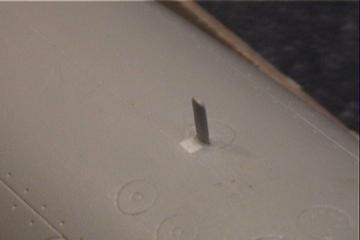
The plate on the bottom of the fuselage for the cannons needs some sanding to get a good fit. The three separate cannons do not fit that well and have injection pin marks on them. It’s better to cut off the locating pins. The cannons will need a lot of work to get them to fit properly and look decent. The nose gear well is also molded into this plate and has some nice detail but it is not deep enough. There’s no deep section for the tire; just a flat plate. There is also a gap between the front and the sides of the plate and the rear of the splitter plate, which makes up the forward-most portion of the nose gear well. This is a similar problem on the Tamiya kit. The only way to correct it is with a few small strips of styrene. This plate can also hold a lot of lead weight so that’s where I put mine. It won’t be noticeable since I put in the intake tubes.
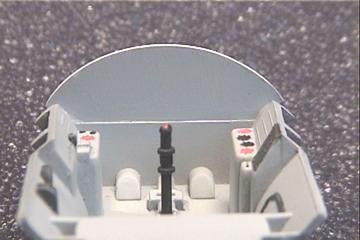
There are a number of injection pin marks on the landing gear and the gear doors. Trying to fix the ones on the gear doors will probably destroy the detail on the inside of the gear doors. As I had mentioned before the tires are rubber. We need a good set of resin ones. For the wheel hubs I don’t know what Trumpeter was thinking. You only get detail on one side and on the other side is just the center portion to attach the gear leg to and nothing else around it; just a big hole. You’ll need to cut out a good 7/16« disc to cover the main wheel hub. The same goes for the nose wheel hub.
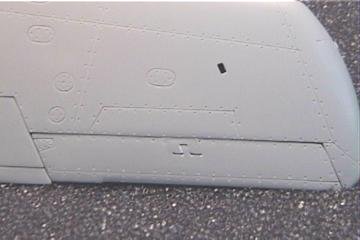
The canopy seems to be one last problem. The windscreen is completely incorrect. The front plate should be sloped more and it has a bar that runs along the top-center that shouldn’t be there. From all my references the oval center portion runs almost all the way to the top and the frame blends into the rest of the canopy frame. The main canopy does not look bulbous enough and the framing looks to thick. There is no detail on the front or rear cockpit decking.
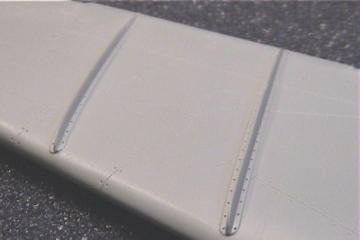
I plan on painting mine in the dark green squiggle pattern over sky color. Once I complete the kit I’ll have some more to add to the write up and additional pictures.
When I finish one of the F-5s (MiG-17) I’ll also complete a similar write up.
The first photo was taken by a friend over at his house about 6-7 weeks ago. I had just barely started on the kits.
© Mark A. Hernandez
This article was published on Wednesday, July 20 2011; Last modified on Saturday, May 14 2016
